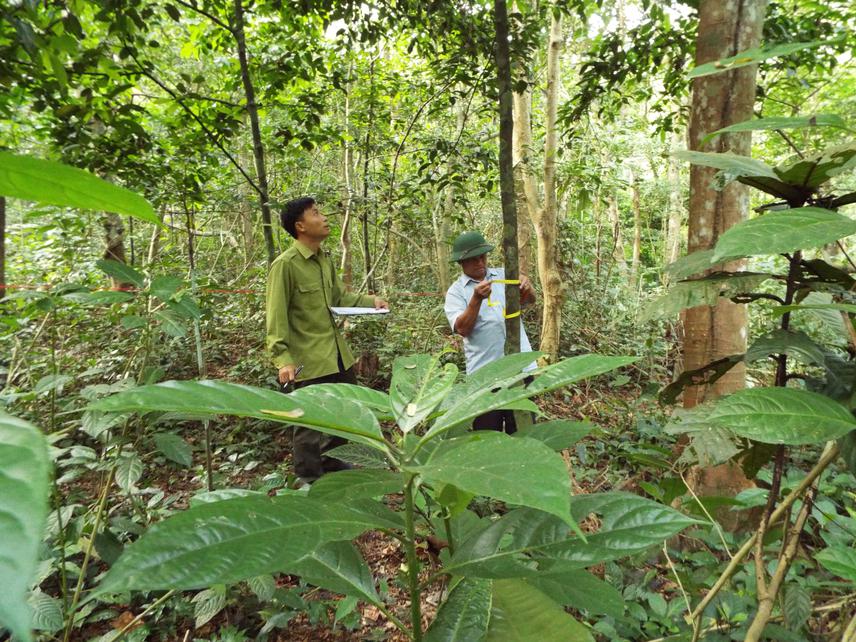Pham Van Vien
Cat Ba National Park is a hot spot of biodiversity and naturalness. However, species richness and diversity are evidently affected by many human activities like slash removal, burning, forest exploitation, hunting, etc. But it remains unclear to which extent the regeneration of rare tree species is affected by these activities and/or by environmental conditions. Therefore the objectives of the project are: (1) study the distribution and abundance of IUCN's red-listed species; (2) determine the effect of environmental factors on regeneration dynamics of these species; (3) derive appropriate measures and management recommendations for the conservation of rare tree species.

My team measure the tree dimension and identify tree name.
The Cat Ba National Park has a total area of 15,200 hectares (ha). About 9,800 ha are terrestrial ecosystems; 5,400 ha are marine ecosystems. The area of Cat Ba National Park’ accounts for over 50% of the total area of Cat Ba Island with 28,500 ha. In particular, 800 ha of the park are strictly protected (but nevertheless influenced by men) and consist of primary forests; the rest of park is classified as ecological restoration area with 14,000 ha. Other areas are construction land, farm land and resident area.
Cat Ba is a unique national park in which many different ecosystems can be found: evergreen forest on limestone, wetland forest ecosystems in the high mountains, mangrove forest, coral reefs, cave systems with distinct characteristics and many others.
Among the 1,561 vascular tree species of Cat Ba National Park, 58 tree species are listed in Vietnam’s Red-listed, and another 16 tree species are listed in IUCN’s Red-listed. These tree species are currently endangered by human exploitation occurring in the park, resulting in some species apparently being threatened with extinction, especially the rare species. Therefore, measures are urgently necessary to protect and develop this precious ecosystem. To determine, how to protect the species and improve the park management, research on species’ ecology is required, because currently the knowledge in this field is more than sparse. So far, only the presence of rare species has been documented, but nearly nothing is known about their regeneration ecology and habitat requirements. This knowledge is crucial to decide on recommendations and actions on how to protect the species. This study will therefore initially focus on rare tree species and record their distribution patterns against environmental key factors, expected to affect abundance and regeneration. The aim of this study is to provide government and park management with scientific evidence as basis for building a sound strategy to preserve and protect the rare species and unique biodiversity of the Cat Ba National Park.